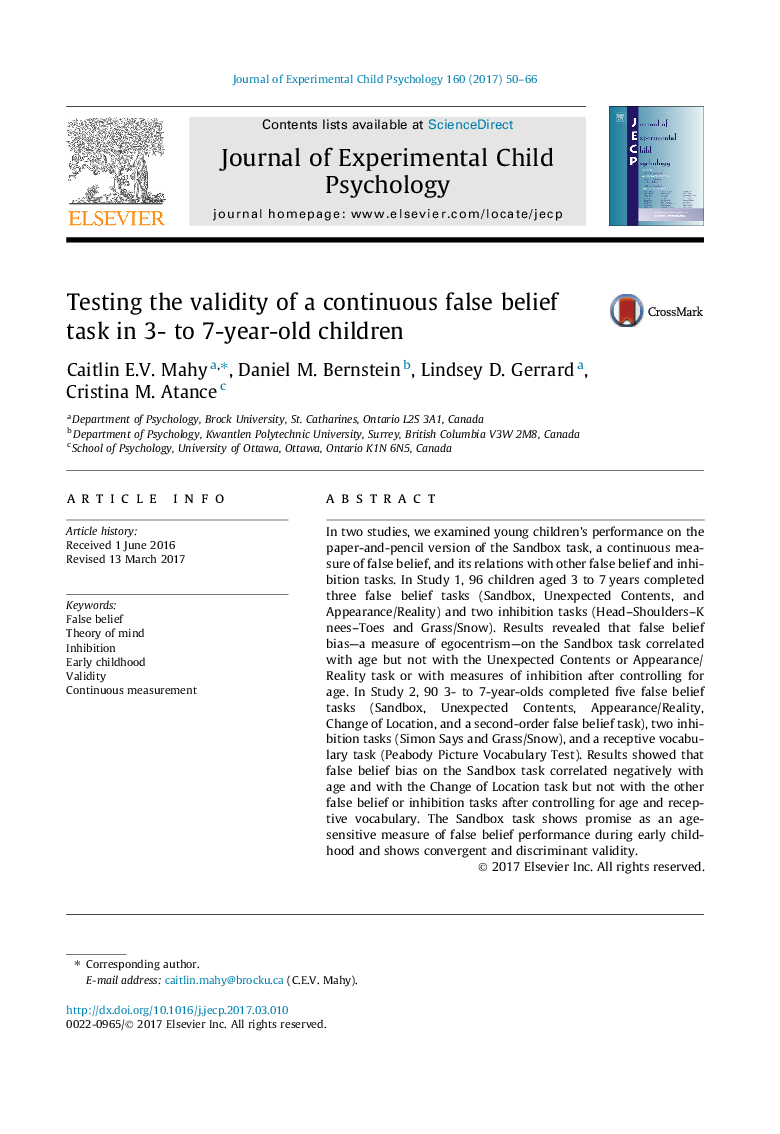ترجمه فارسی عنوان مقاله
تست روایی یک وظیفه باور نادرست مداوم در کودکان 3- تا 7 ساله
عنوان انگلیسی
Testing the validity of a continuous false belief task in 3- to 7-year-old children
| کد مقاله | سال انتشار | تعداد صفحات مقاله انگلیسی |
|---|---|---|
| 132411 | 2017 | 17 صفحه PDF |
منبع

Publisher : Elsevier - Science Direct (الزویر - ساینس دایرکت)
Journal : Journal of Experimental Child Psychology, Volume 160, August 2017, Pages 50-66
ترجمه کلمات کلیدی
باور غلط، نظریه ذهن، بازداری، اوایل کودکی، اعتبار، اندازه گیری مداوم،
کلمات کلیدی انگلیسی
False belief; Theory of mind; Inhibition; Early childhood; Validity; Continuous measurement;

